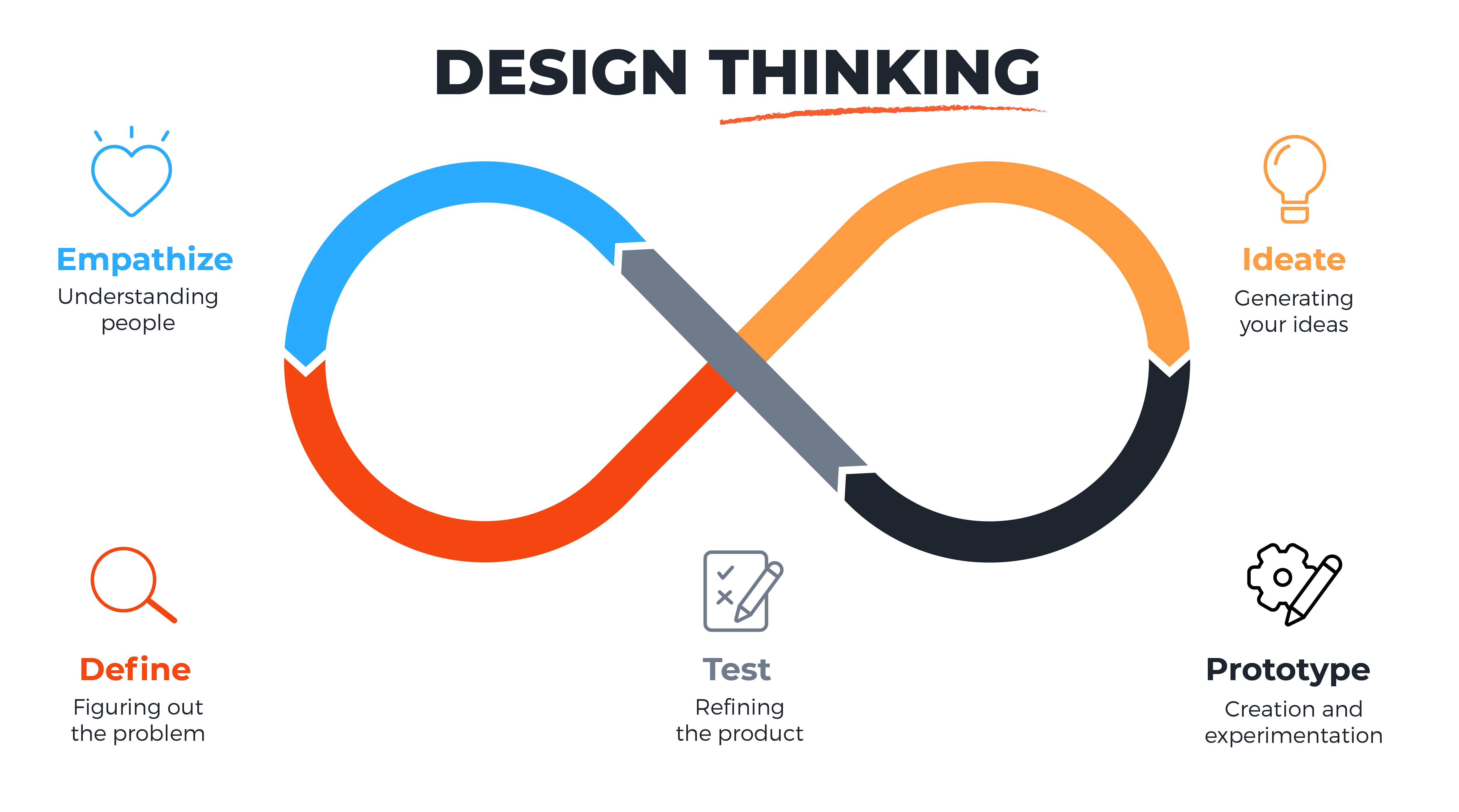
Current public opinion portrays design as making products or services more attractive and therefore more marketable. But good visuals and marketability are not the only factors needed to create a successful design. A lesser-known school of thought, design thinking, combines empathy, ideation, prototyping, and user testing to create the most valuable design for the company and the consumers.
Design thinking stomps on the idea that designers know best. Instead, it puts the users in the spotlight and allows them to create the design. The process doesn’t begin with a problem already defined but instead looks to consumers to tell designers what the problems are. This way no time is wasted designing a solution to a problem that users don’t even suffer from.
Designers that utilize design thinking ask consumers what they want to be fixed and how they want it to be fixed. It is then up to the designer to brainstorm ideas and possible solutions that bring value to both the customer and the company.

There is no way to know if a consumer will like the design before it’s in their hands. That’s why prototyping is necessary to understand what is working with a design and what needs improvement. Design thinking allows users to test a design and report their honest opinions on whether it was successful or not. Consumer feedback is where new ideas grow from.
Design thinking also promotes that designers immerse themselves into the consumer world. They might visit the in-person establishment of a brand or attempt to purchase through the brand’s website. This allows them to see through the user’s eyes and take note of any complications that might occur while using the design. For example, Air BnB sends new employees on a trip during their first week and asks them to report back on their experiences. This shows the design team a side of the consumer process they may have never seen before.
The design thinking process is not linear but instead jumps around. Important results might come to light during the testing phase that needs to be applied back in the early stages of idea conception. Designers can return back to their original solutions and revise them to better fit the newly discovered findings.
Design thinking can also be valuable to a brand because of its ability to cultivate a relationship between buyer and producer. Never before had the consumers been involved with the design process and it has created feelings of sentiment. Users feel they can trust a brand or company that wants to hear from the users and cares about their needs. Inventor, Tim Brown, says this is why putting users at the forefront of the design is most important. Design thinking is meaningful to consumers but profitable for producers.

I personally believe that design thinking should have been used for centuries. If a brand or company wants users to use their service or buy their product, they have to deliver what they actually want. For many years, designers have only provided what they think users want. The design thinking process takes this guessing out of the equation and allows users to tell them exactly what will succeed.